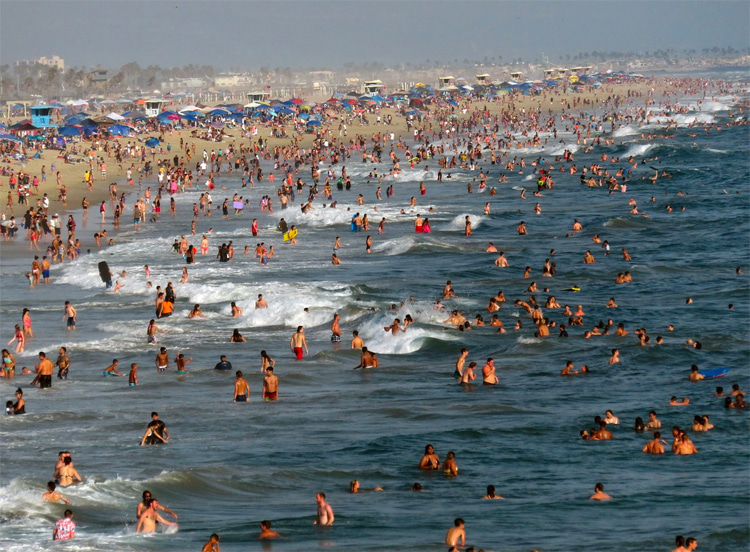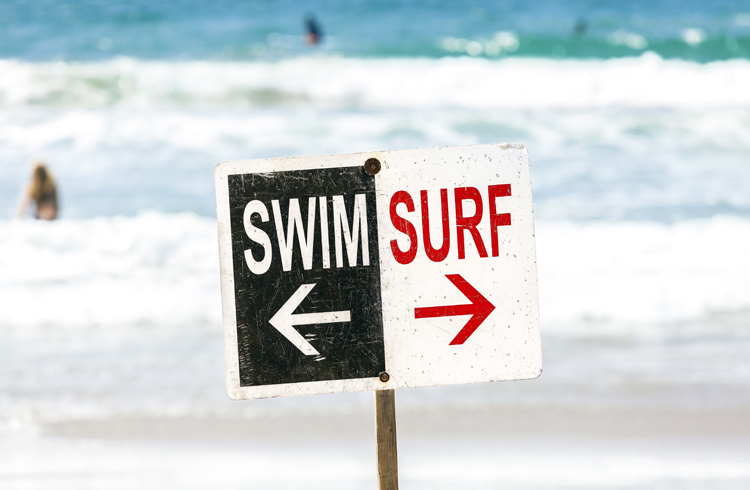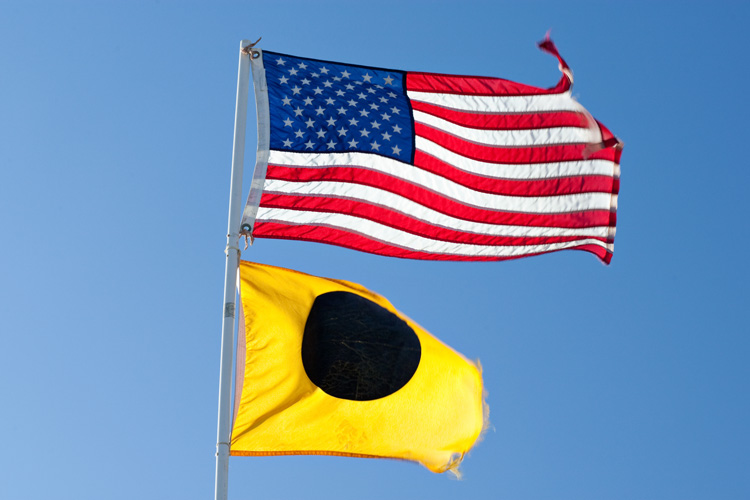It's a surfer's nightmare, and you can do nothing about it. The black ball flag is a synonym for "no surfing," even if the waves are pumping out the back.
The black ball, or blackball flag, is a rectangular flag featuring a centered, solid black circle against a yellow background raised on Southern California beaches during summer.
The flag waves over the lifeguard tower and prohibits hard fiberglass/polyurethane foam surfboards and skimboards in the waters of that beach.
The ban can be more or less temporary (for example, during the busiest hours of the day) and less or more restricted to a specific area (for example, 100 yards to the left of a landmark).
Black ball flag supporters say it represents a safety measure to protect beachgoers and swimmers from crowded summer surf line-ups.
They blame surfers for hurting swimmers with their boards.

First Introduced In California
The concept was introduced in Santa Monica, California, in the early 1960s and has always been at the center of a heated discussion between surfers, non-surfers, and local authorities.
Newport Beach was one of the first coastal communities to adopt the black ball and, over the years, regularly discussed and implemented the black ball regulations.
Home to the infamous The Wedge, Newport Beach is known for having a highly restrictive ban on surfboards during the warm season.
In some situations, bodyboards and finless soft foam surfboards may be allowed in the surf.
In other words, although they are all considered surf craft, some surf towns clearly distinguish between "hard boards" and "soft boards."
If you're a bodysurfing enthusiast, you'll be pleased to know that your swim fins are allowed in the waves.

A Controversial Flag
There's rarely a win-win situation for surfers, bodyboarders, and beachgoers.
Some parties argue that there should be no time limits on surfing or swimming; others will also say that declaring a black ball should be left to the lifeguards' discretion.
The truth is that there are no optimal answers to the heated debate. There's no perfect formula on how to enforce the black ball flag.
On the one hand, beachgoers have the right to enjoy the pleasures of swimming in the ocean. But on the other hand, surfers should be allowed to catch and ride waves on public beaches.
On the opposite side of the black ball flag is the checkered flag.
It tells beach users that they're in a surfing designated area or zone dedicated to other non-powered watercraft users.
One question might not have a clear answer: Should swimmers or surfers be given preferential treatment? The black ball flag discussion continues.
Explore the complete list of beach flags and warning signs.
